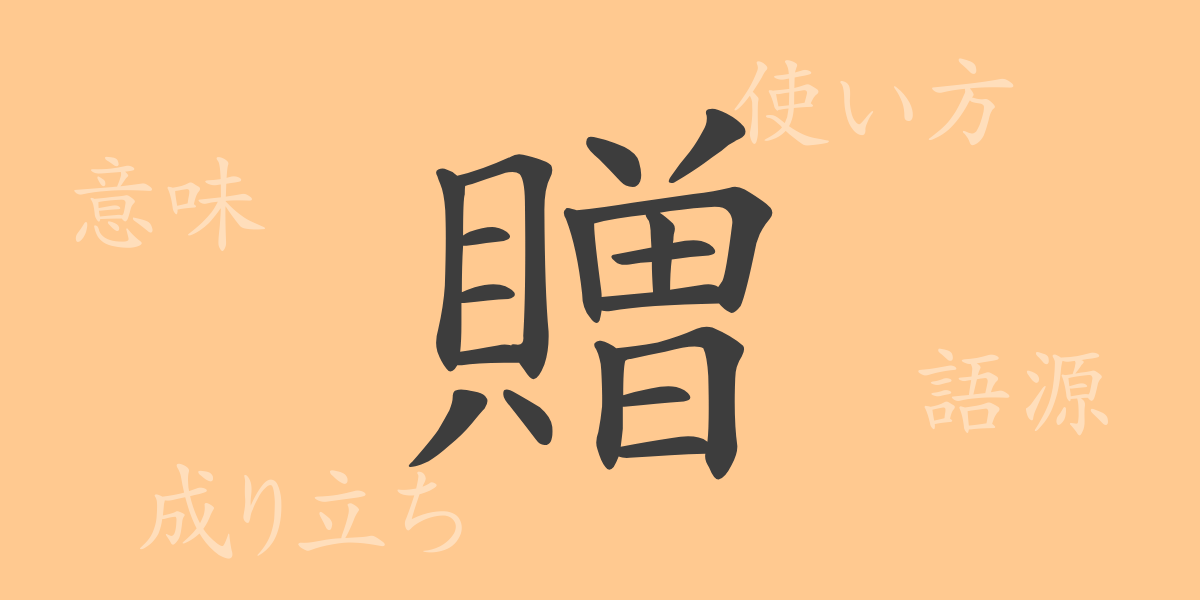Text serves as a bridge connecting cultures and conveying emotions. The common Kanji “(贈)” in Japanese carries profound meanings and has a significant role in our daily lives. In moments where bonds deepen through gifts, the power of this character is immeasurable. This article delves into the charm of the Kanji “(贈)”, exploring its origin, meaning, usage in contemporary contexts, and more.
Etymology of 贈 (ぞう – Zō)
The Kanji “(贈)” originates from ancient China, initially meaning “to give a gift”. Its form combines the pictographs for “貝” symbolizing valuables and “曽” representing the act of giving. Together, they signify the repeated act of presenting something valuable.
Meaning and Usage of 贈 (ぞう – Zō)
The Kanji “(贈)” means “to give” or “to present a gift”. It is frequently used to express gratitude or respect through gifts, especially in formal or ceremonial settings. Depending on the context, it can also convey the emotions behind the act of giving.
Readings, Stroke Count, and Radical of 贈 (ぞう – Zō)
Basic information about the Kanji “(贈)” includes:
- Readings: On’yomi (音読み) ‘ゾウ’ (zō), Kun’yomi (訓読み) ‘おくる’
- Stroke Count: 18 strokes
- Radical: 貝 (かい – kai)
Idioms and Proverbs Using 贈 (ぞう – Zō) and Their Meanings
There are many idiomatic expressions and proverbs involving “(贈)”, showcasing the richness of Japanese language expressions:
- 贈答品 (ぞうとうひん – zōtōhin): Items suitable as gifts.
- 贈賄 (ぞうわい – zōwai): Giving property or benefits for illicit purposes.
- 手土産に花を贈る: The custom of bringing flowers as a gift when visiting.
Conclusion on 贈 (ぞう – Zō)
The Kanji “(贈)” transcends mere gift-giving; it is a crucial means to convey emotions such as gratitude, respect, and affection. Symbolizing Japanese traditions and etiquette, its value remains timeless in contemporary times. Understanding the meanings embedded in this character enables us to enrich our communications.

























